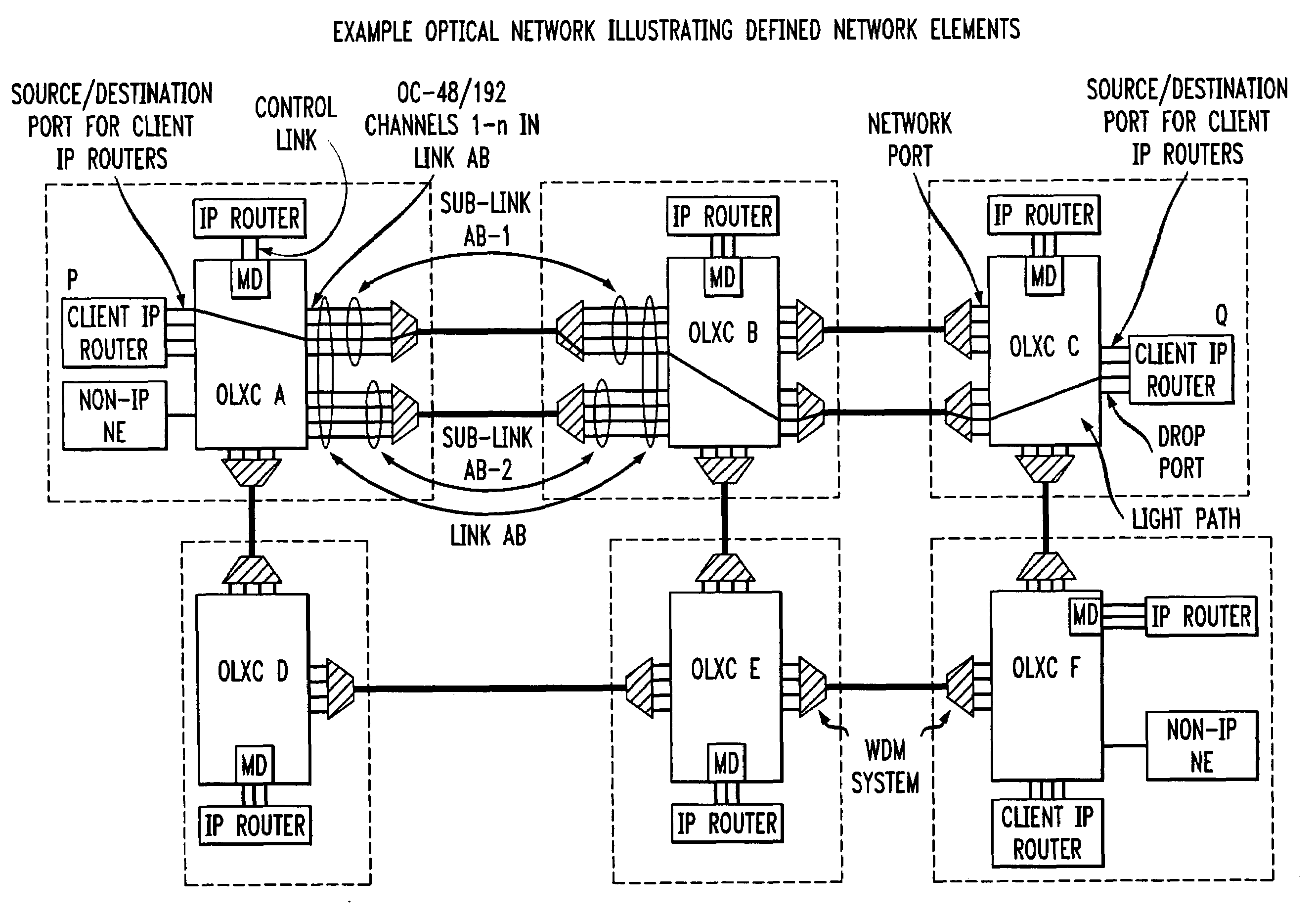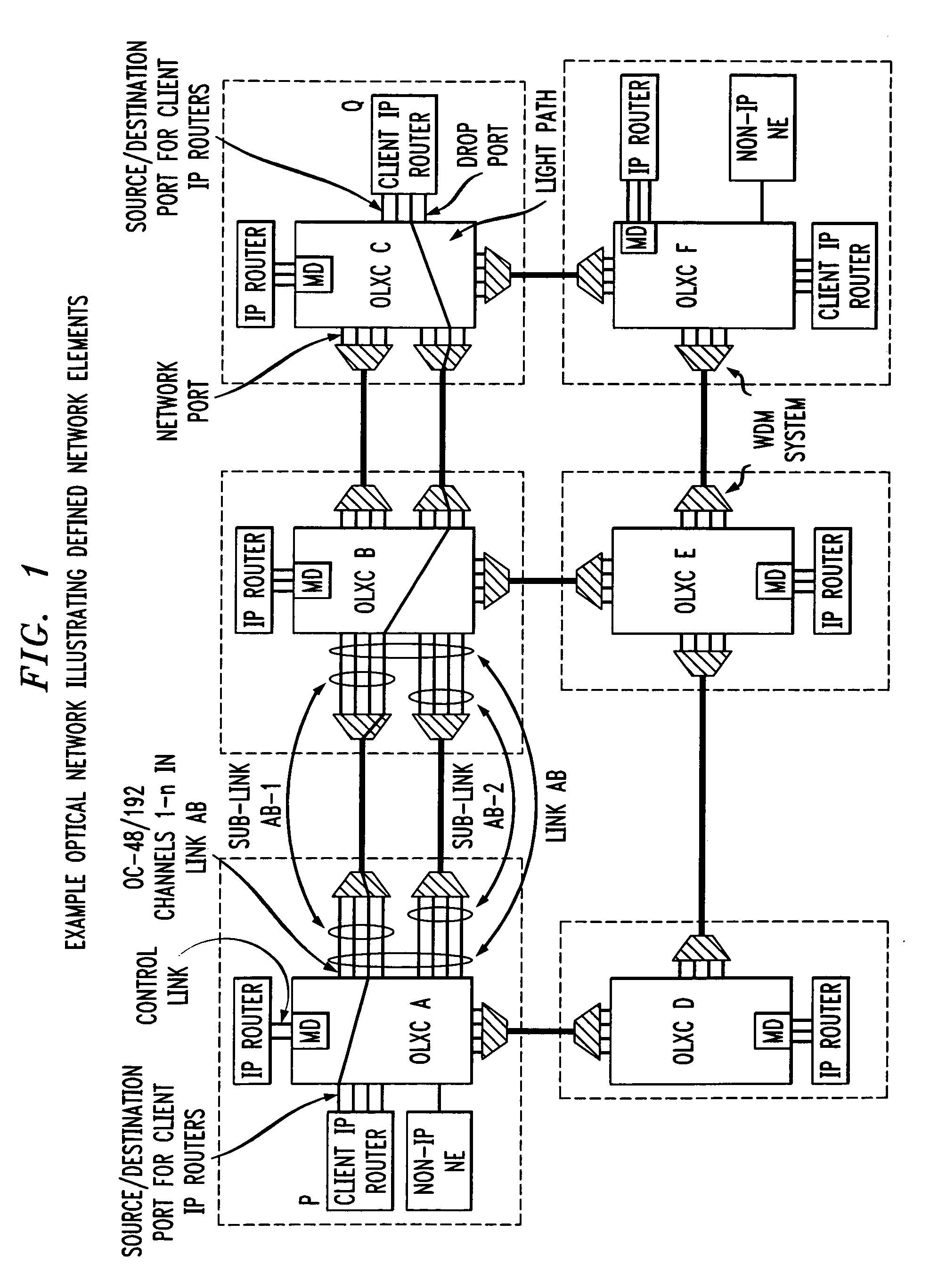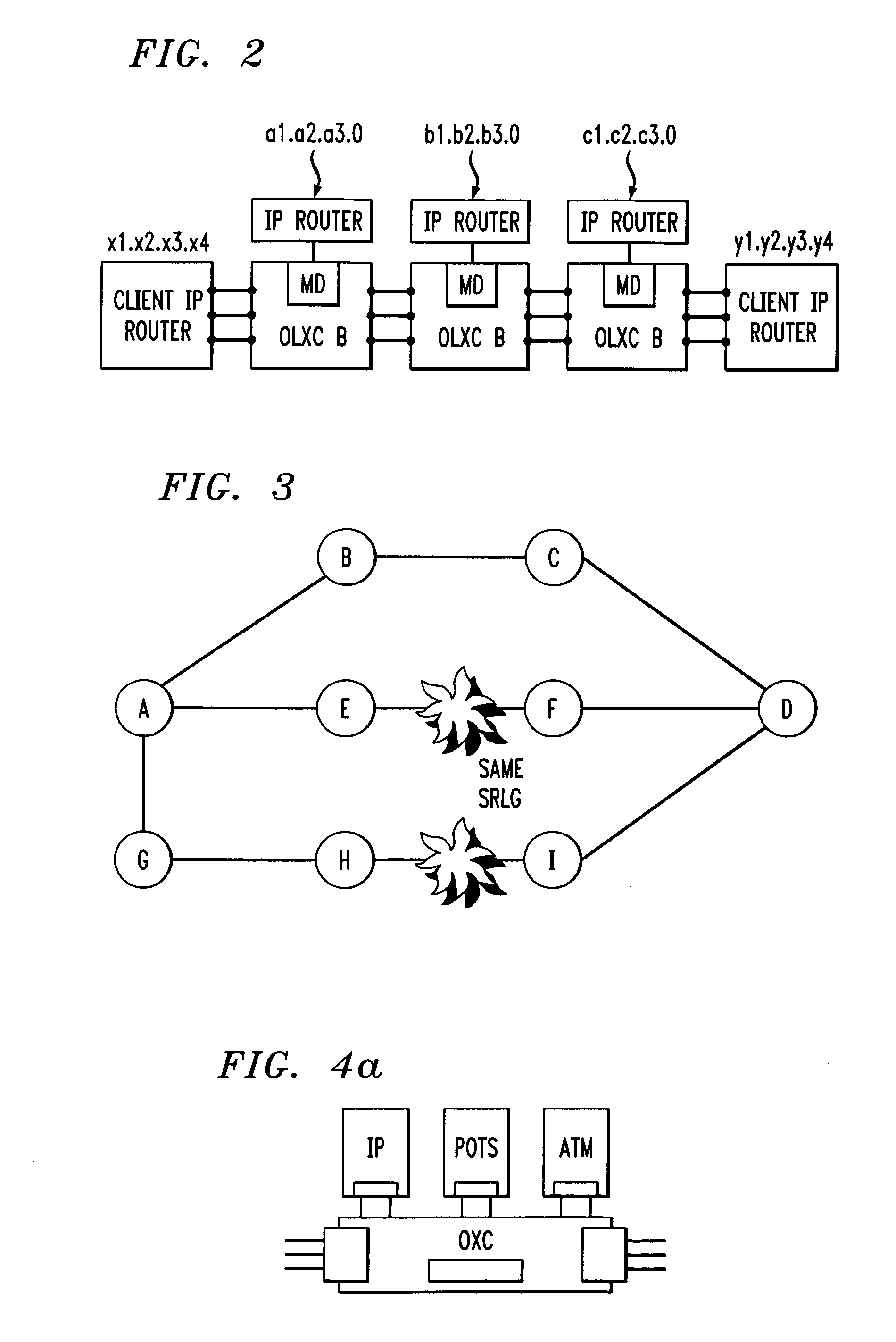Control of optical connections in an optical network
a technology of optical connections and optical networks, applied in the field of optical communication, can solve the problems of sacrificing the simplicity and flexibility of the internet, sacrificing the scalability of the internet, and the high growth rate of internet traffic volume, and achieve the effect of efficient restoration of network servi
- Summary
- Abstract
- Description
- Claims
- Application Information
AI Technical Summary
Benefits of technology
Problems solved by technology
Method used
Image
Examples
Embodiment Construction
[0030]FIG. 1 illustrates an optical network with multiple optical layer cross-connects (OLXCs) interconnected via WDM links. Each node in this network consists of an IP router and a dynamically-reconfigurable OLXC. Optical lightpaths are established between network elements, via OLXCs. In FIG. 1 these network elements are client IP routers, illustrated at P and Q. A channel (or multiple channels) is chosen on each of the links along the route chosen for establishing a lightpath. Provisioning a lightpath is like establishing a connection using a connection setup mechanism. That is, a lightpath is like a virtual circuit.
[0031]In order to facilitate the description of the present invention the following network objects (also illustrated in FIG. 1) are defined. A Wavelength Division Multiplexer (WDM) is a system, which takes multiple optical inputs, converts them into narrowly spaced wavelength optical signals within an optical amplification band and couples them onto a single fiber. Th...
PUM
 Login to View More
Login to View More Abstract
Description
Claims
Application Information
 Login to View More
Login to View More - R&D
- Intellectual Property
- Life Sciences
- Materials
- Tech Scout
- Unparalleled Data Quality
- Higher Quality Content
- 60% Fewer Hallucinations
Browse by: Latest US Patents, China's latest patents, Technical Efficacy Thesaurus, Application Domain, Technology Topic, Popular Technical Reports.
© 2025 PatSnap. All rights reserved.Legal|Privacy policy|Modern Slavery Act Transparency Statement|Sitemap|About US| Contact US: help@patsnap.com



